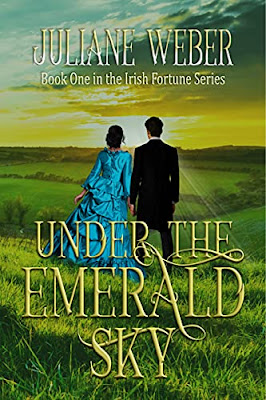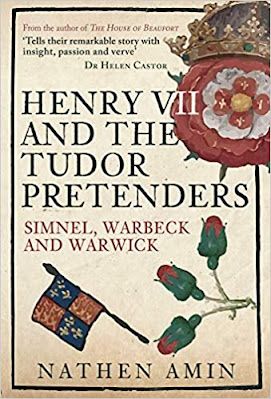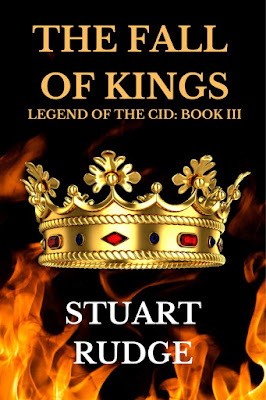There’s a chorus of an old song that I’m sure most people have heard at least once in their life:
I’m not torn between two lovers, but I have to admit to feeling torn between Tudor queens. Yes – I have my fair share of Anne Boleyn replica jewellery, an Anne Boleyn Iphone case, Anne Boleyn note paper and even devoted years of my life to give voice to Anne Boleyn in my fiction, but that doesn’t take away from the fact that I feel just as devoted to Katherine of Aragon. I have even my Falling Pomegranate Seeds series (my two novels about Katherine of Aragon) to prove it.
So many people think of Katherine of Aragon as a Spanish princess, but she wouldn’t have described herself in that way – not really. It was the marriage of her father and mother, King Ferdinand of Aragon and Queen Isabel of Castilla, two monarchs who ruled over different parts of what is now known as Spain, that resulted in the gradual union of their two countries that became one of the most powerful dominions in Christendom.
As a daughter of King Ferdinand, Katherine was a princess of Aragon. Her mother – the Queen of Castilla, a far more powerful country than Aragon – could have made it very difficult for her husband, but her great ability in diplomacy was apparent even on the home front. She chose to wield her power in such a way that always included her husband. Her immense gifts as a ruling monarch makes me wonder if this was the reason history renamed her Isabella – a name, it is believed, the English brought into being when they wanted to belittle the grandmother of Mary I, as well as in response to the Spanish Armada (Liss 2002).
Born on the sixteenth day of December in 1485, Katherine of Aragon, or Catalina as she was known at her mother’s court, was the fifth and last child of these two monarchs. At three, Katherine was betrothed to Prince Arthur, the first-born son of a new royal English dynasty: the Tudors.
Extremely intelligent, pious and educated by the best tutors her mother could find, Katherine was also trained – like her three older sisters – by her mother to be a devoted and obedient wife who was able to be a good helpmeet for their husband. Katherine was not only able to care well for her husband’s stomach, but also was an excellent embroiderer and maker of manly shirts. She would one day anger Anne Boleyn when she refused to stop making shirts for Henry VIII. As his wife, it was her duty to make them (Fraser 1998).
There are many stories from the pages of history about Katherine I can visualise as a fiction writer. One story I especially love - when Wolsey visited Katherine during the time of "The King's Great Matter". Busy sewing with her women, Katherine doesn’t invite him into her chamber, but speaks to him at the door, with skeins of threads over her shoulder and I suspect a needle in her hand.
Like Anne, Katherine did not like Wolsey, especially in this time when she was being pressured to step aside as Henry’s Queen. Did she feel tempted to accidently brush against Wolsey and prick him with her needle? Make him bleed, because she saw him as one of the reasons her husband now rejected her, making her own heart bleed.
Katherine arrived in England just before her sixteenth birthday, after a long and perilous journey from her mother's kingdom of Castile. The sea journey was even more dangerous, with her ships being driven back once by terrible storms before venturing out to sea again. A chronicle of the period said:
It is reported that this lady Katherine thought and feared such an unhappy chance might come, (the death of her husband, Prince Arthur) for when she had embraced her father and taken leave of her noble and prudent mother, and sailed towards England, she was continually so tossed and tumbled hither and thither with boisterous winds that what with the raging of the water and the contrary winds her ship was prevented many times from approaching the shore and landing (2014 Primary Sources, online).
Katherine met her future husband and his father at the Bishop’s palace at Dogmersfield in Hampshire. At this palace – against all Castilian custom, a custom historically influenced by the Moors – Henry VII insisted on lifting the veil of his son’s bride. He saw a pretty girl with grey eyes. Her skin colour appeared to be what is still described of as the English rose, which she inherited from her English ancestors.
Katherine’s grandmother was Catherine of Lancaster, the daughter of John of Gaunt (Fraser 1998). Katherine’s greatest beauty was her thick red/gold hair, hair that cascaded past her waist. When she first met Henry VII and Prince Arthur, her hair would have flowed free – as a symbol of her virginity. Sigh. I always feel somewhat cross when I see Katherine of Aragon recreated in movies or television shows as a woman with black-hair. She wasn’t. Thomas More said of her: ‘There is nothing wanting in her that the most beautiful girl should have’ (2014 Historic Royal Palaces, Online source).
Arthur Prince of Wales
The King and Prince Arthur expressed themselves fully pleased with Katherine. Arthur wrote later about his joy at first seeing ‘the sweet face of his bride’ (Fraser 1998, p. 24). But Arthur’s happiness was short-lived. Within only a few months of marriage, the fifteen-year-old prince was dead and Katherine fighting for her own life. They had both been stricken with one of those sudden deadly illnesses of the period – probably the English sweat - that struck fast and hard.
Katherine was pious and honest. After Arthur’s death, Katherine said, over and over, that their marriage had never been consummated. Her father wrote, in 1503, ‘It is well known that the princess is still a virgin’. But he was also a wily politician. In arranging Katherine’s betrothal to Prince Henry, her husband’s younger brother, her father asked the Pope to write up the dispensation in a way that made the question of her virginity unimportant and would safeguard Katherine’s later marriage. Henry VII also protected his own child and son, not forgetting his political back – the marriage would only go forward when Henry the younger was old enough to agree to the match.
Katherine endured seven dreadful years after Arthur’s death. A political pawn – in the hand of a father-in-law who often acted towards her like an utter miser – she was kept short of funds, as well as powerful friends. I agree with Antonia Fraser that these years of deprivation shaped her in such a way that made it impossible for her to bend when Henry VIII later sought to take a new wife (Fraser 1998). In that future time, Katherine probably remembered her time of triumph after seven years of hell while a widow. It is possible that she thought that all she needed to do was to keep faith and God would answer her prayers again.
I also find myself wondering if this time of deprivation impacted upon her health. Katherine spent many hours praying and days fasting during these bleak years. Perhaps this led to some kind of physical damage that caused complications during her pregnancies, making it difficult for her to bear living children. Alison Weir also suggests this in Henry VIII, King and Court, that Katherine’s deep piety and habit of fasting – behaviours reinforced during her widowhood – may have caused reproduction problems (Weir 2001).
Just before Henry VII died, a desperate Katherine contemplated taking the veil. She was saved from this destiny for another destiny when the King died in 1509 and she married – just weeks later – his son, Henry VIII.
During the early years of Katherine's marriage to the young Henry Tudor, the English court had a reputation for learning as well as piety. I have no doubt that Katherine influenced and encouraged her husband's better traits. Greatly respected for her intelligence, Katherine acted as her father’s ambassador during the early years of her marriage to Henry. Henry VIII also had no hesitation in entrusting his Kingdom to his wife whenever he decided to ride off to war with France, his country's traditional enemy.
Katherine did her very best to provide Henry with a royal heir. She believed she had done her duty by giving her husband their daughter, Mary, the only child of their union to survive infancy and live to adulthood. Perhaps if the fates had been kinder – if her husband hadn’t convinced himself that their marriage was accursed, and indeed was no marriage after his hopes for a son had been dashed time after time by the birth of yet another dead or soon to be dead baby – Mary could have been a valid answer to the English succession.
18 Year Old Henry in 1509
Katherine took her responsibilities as Queen very seriously. She gave money to the poor, was a patron of scholars and poets, and enriched religious orders not only with her presence, but also with her wealth. As the events of the Evil May Day, in 1517, proved when she begged for four hundred lives of those who had rioted in London, protesting against foreigners making their livelihoods in London, she was willing to stand up to her husband for those deprived of power. Her actions on during that terrible May were long remembered in a ballad:
What if (she said) by Spanish blood,
have London's stately streets being wet,
Yet will I seek this country’s good
And pardons for their children get;
Or else, the world will speak to me,
And say, “Queen Catherine was unkind,”
And judge me still the cause to be,
These young men did misfortune find.
And so disrobed of rich attire,
With hair unbound she sadly hies,
And of her gracious lord required,
A boon, which hardly he denies…
For which, kind Queen, with joyful heart,
She heard their mothers’ thanks and praise;
And so from them did gently part,
And lived beloved all her days…
(Luke 1971, p.195).
Henry VIII may have rejected her as his wife, but England never rejected her as one of their most beloved Queens. To this day, also like Anne Boleyn, flowers are placed on her tomb.
Sometimes, I find myself imagining Katherine and Anne, alone together, in a heavenly, Tudor garden. The sun shines brightly as they sit close together, heads bent, their hands busy at completing exquisite embroideries. They murmur and laugh together, and I hear the often-repeated name of Henry: a man they both loved until their last living breath. I think, in Heaven, free of life’s sorrows and the battles to live and to love, Anne and Katherine would at last discover their common ground and find an eternal friendship.
Wendy J. Dunn
References:
Fraser, A, 1998, The six wives of Henry VIII, Arrow Books, London
Weir, A, 2001, Henry VIII, King and court, Ballantine Books, New York
Luke, M. L 1971, Catherine, the Queen, Paperback Library, New York
Liss, P. K 2002, “Isabel, Myth and History”, in Isabel la Católica, Queen of Castile: Critical Essays, David A. Boruchoff (Editor), 2002, Palgrave Macmillan, New York.
2014. Primary Sources: The death of Prince Arthur Tudor, 1502. [ONLINE] Available at: http://englishhistory.net/tudor/darthur.html. [Accessed 17 September 2014].
2014 Historic Royal Palaces: Hampton Palace, viewed 17 September 2014,
The original version was first published on 19/09/2014 at English History Fiction Authors.
# # #
About the Author

Wendy J. Dunn is an Australian author, playwright and poet who has been obsessed by Anne Boleyn and Tudor History since she was ten-years-old. She is the author of two Tudor novels: Dear Heart, How Like You This?, the winner of the 2003 Glyph Fiction Award and 2004 runner up in the Eric Hoffer Award for Commercial Fiction, and The Light in the Labyrinth, her first young adult novel. While she continues to have a very close and spooky relationship with Sir Thomas Wyatt, the elder, serendipity of life now leaves her no longer wondering if she has been channeling Anne Boleyn and Sir Tom for years in her writing, but considering the possibility of ancestral memory. Her family tree reveals the intriguing fact that her ancestors – possibly over three generations – had purchased land from both the Boleyn and Wyatt families to build up their own holdings. It seems very likely Wendy’s ancestors knew the Wyatts and Boleyns personally. Wendy tutors at Swinburne University in their Master of Arts (Writing) program. Find out more at her website
http://www.wendyjdunn.com/ and find her on
Facebook and Twitter
@wendyjdunn




























